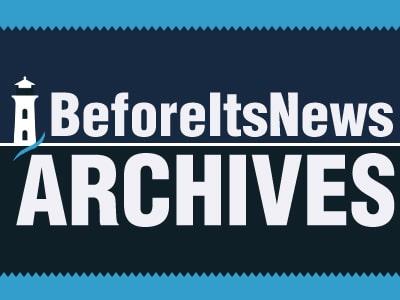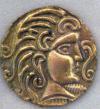Unsolved Mystery Where Did Greenland's Viking Settlers Go

Greenland’s viking settlers, the Norse, disappeared suddenly and mysteriously from Greenland about 500 years ago. Natural disasters, climate change and the inability to adapt have all been proposed as theories to explain their disappearance. But now a Danish-Canadian research team has demonstrated the Norse society did not die out due to an inability to adapt to the Greenlandic diet: an isotopic analysis of their bones shows they ate plenty of seals.
Archaeologists dig up skeletons of Norse settlers in 2010 at the Norse farm Ø64, Igaliku Fjord,
Østerbygden, Greenland.
Photo: Jette Arneborg
“Our analysis shows that the Norse in Greenland ate lots of food from the sea, especially seals,” says Jan Heinemeier, Institute of Physics and Astronomy, Aarhus University.
“Even though the Norse are traditionally thought of as farmers, they adapted quickly to the Arctic environment and the unique hunting opportunities. During the period they were in Greenland, the Norse ate gradually more seals. By the 14th century, seals made up between 50 and 80 per cent of their diet.”
The Danish and Canadian researchers are studying the 80 Norse skeletons kept at the University of Copenhagen’s Laboratory of Biological Anthropology in order to determine their dietary habits. From studying the ratio of the isotopes carbon-13 and carbon-15, the researchers determined that a large proportion of the Greenlandic Norse diet came from the sea, particularly from seals. Heinemeier measured the levels of carbon isotopes in the skeletons, Erle Nelson of Simon Fraser University, in Vancouver, Canada, analysed the isotopes, while Niels Lynnerup of the University of Copenhagen, examined the skeletons.
“Nothing suggests that the Norse disappeared as a result of a natural disaster. If anything they might have become bored with eating seals out on the edge of the world. The skeletal evidence shows signs that they slowly left Greenland. For example, young women are underrepresented in the graves in the period toward the end of the Norse settlement. This indicates that the young in particular were leaving Greenland, and when the numbers of fertile women drops, the population cannot support itself,” Lynnerup explains.
Hunters and farmers
Photo: Jette Arneborg
The findings challenge the prevailing view of the Norse as farmers that would have stubbornly stuck to agriculture until they lost the battle with Greenland’s environment. These new results shake-up the traditional view of the Norse as farmers and have given archaeologists reason to rethink those theories.
“The Norse thought of themselves as farmers that cultivated the land and kept animals. But the archaeological evidence shows that they kept fewer and fewer animals, such as goats and sheep. So the farming identity was actually more a mental self-image, held in place by an over-class that maintained power through agriculture and land ownership, than it was a reality for ordinary people that were hardly picky eaters,” Jette Arneborg, archaeologist and curator at the National Museum of Denmark, says.
The first Norse settlers brought agriculture and livestock such as cattle, sheep, goats and pigs from Iceland. While they thought of themselves as farmers, they were not unfamiliar with hunting.
University of Copenhagen
They quickly started to catch seals, as they were a necessary addition to their diet. Toward the end of their stay, they became as accustomed to catching seals as the Inuit, who had travelled to Greenland from Canada around the year 1200 and inhabited the island alongside the Norse. Seals became more important for Norse survival as the climate began to change over time and it became increasingly difficult to sustain themselves through farming.
“The Norse could adapt, but how much they could adapt without giving up their identity was limited. Even though their diet became closer to that of the Inuit, the difference between the two groups was too great for the Norse to become Inuit,” Arneborg says.
The isotopic analysis is an interdisciplinary collaboration between Aarhus University, the University of Copenhagen, the National Museum of Denmark and Simon Fraser from the University in Vancouver. The research is financed by the Carlsberg Foundation and the results will be presented in a series of articles in the Journal of the North Atlantic, Special Volume 3, 2012.
Read more in the articles (pdf):
An Isotopic Analysis of the Diet of the Greenlandic Norse
Human Diet and Subsistence Patterns in Norse Greenland
Isotopic Analyses of the Domestic Animals of Norse Greenland
Norse Greenland Dietary Economy
Professor Niels Lynnerup
More stories:
Extremely Scary Ghost Elevator Prank in Brazil
Human Mutilations By Aliens (Warning Graphic Photos)
Goat Man Sightings In Kentucky, Texas, Maryland
Time-Lapse Map of Every Nuclear Explosion Since 1945 – by Isao Hashimoto
Gravitational Shockwave Weapons: Patented Handgun That Can Destroy Anything
Pac-Man Discovered On Two Saturn Moons
The Annunaki & Human Enslavement
Zecharia Sitchin – The 12th Planet
Dire Prophecies Of Kolbrin Bible
Create Real Objects With Thought Or Control Thought Puppets, Even A Child Can Do It
Human Brainwaves Control Cockroach Leg, Group Creating Cyborg Cockroaches
Ancient Arts Of Courtesanery And Seduction
Unsolved Mystery Where Did Greenland’s Viking Settlers Go
Faceshift Software Enables Avatar To Reproduce Our Emotion In Real Time
Unsolved Mystery Where Did Greenland’s Viking Settlers Go
Tracking Pollution From Outer Space
Do Missing Jupiters Mean Massive Comet Belts?
Ancient Arts Of Courtesanery And Seduction
Anyone can join.
Anyone can contribute.
Anyone can become informed about their world.
"United We Stand" Click Here To Create Your Personal Citizen Journalist Account Today, Be Sure To Invite Your Friends.
Before It’s News® is a community of individuals who report on what’s going on around them, from all around the world. Anyone can join. Anyone can contribute. Anyone can become informed about their world. "United We Stand" Click Here To Create Your Personal Citizen Journalist Account Today, Be Sure To Invite Your Friends.
LION'S MANE PRODUCT
Try Our Lion’s Mane WHOLE MIND Nootropic Blend 60 Capsules
Mushrooms are having a moment. One fabulous fungus in particular, lion’s mane, may help improve memory, depression and anxiety symptoms. They are also an excellent source of nutrients that show promise as a therapy for dementia, and other neurodegenerative diseases. If you’re living with anxiety or depression, you may be curious about all the therapy options out there — including the natural ones.Our Lion’s Mane WHOLE MIND Nootropic Blend has been formulated to utilize the potency of Lion’s mane but also include the benefits of four other Highly Beneficial Mushrooms. Synergistically, they work together to Build your health through improving cognitive function and immunity regardless of your age. Our Nootropic not only improves your Cognitive Function and Activates your Immune System, but it benefits growth of Essential Gut Flora, further enhancing your Vitality.
Our Formula includes: Lion’s Mane Mushrooms which Increase Brain Power through nerve growth, lessen anxiety, reduce depression, and improve concentration. Its an excellent adaptogen, promotes sleep and improves immunity. Shiitake Mushrooms which Fight cancer cells and infectious disease, boost the immune system, promotes brain function, and serves as a source of B vitamins. Maitake Mushrooms which regulate blood sugar levels of diabetics, reduce hypertension and boosts the immune system. Reishi Mushrooms which Fight inflammation, liver disease, fatigue, tumor growth and cancer. They Improve skin disorders and soothes digestive problems, stomach ulcers and leaky gut syndrome. Chaga Mushrooms which have anti-aging effects, boost immune function, improve stamina and athletic performance, even act as a natural aphrodisiac, fighting diabetes and improving liver function. Try Our Lion’s Mane WHOLE MIND Nootropic Blend 60 Capsules Today. Be 100% Satisfied or Receive a Full Money Back Guarantee. Order Yours Today by Following This Link.






